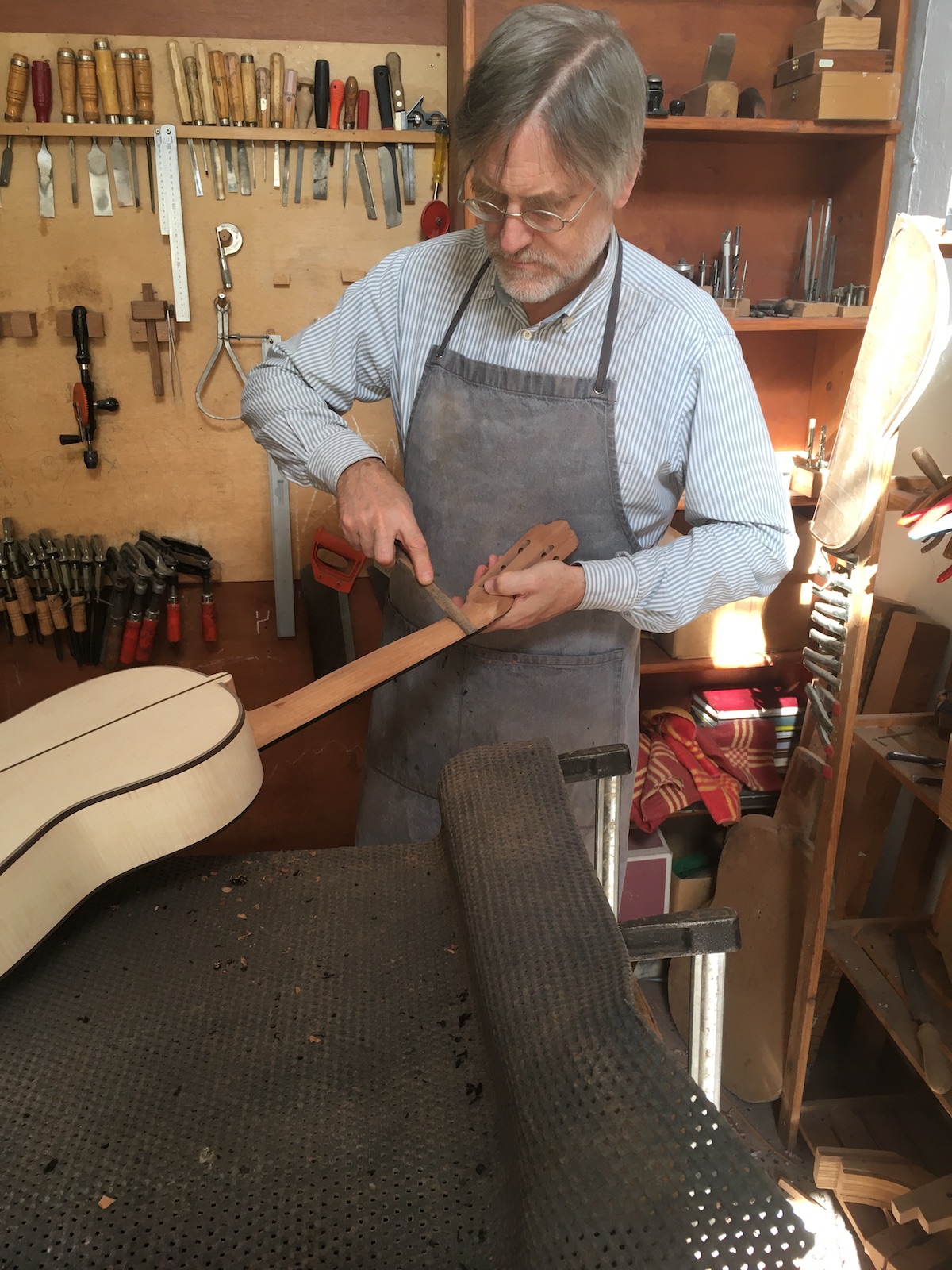Hello again. First I want to clarify something I said in the previous letter. A guitar’s reaction to the strings being played is a a reaction of the whole system and so it must work together. However, the most important subsystem is the top and its bracing. I am not suggesting that you mix and match body styles with top bracing but whatever you do, don’t change the top construction until you have made a few that sound pretty good. And only change little things from there in subsequent guitars. The plan you have of Hauser is from 1943 and I want to remind you that it used thicknesses in line with 20th century spanish guitars while Courtnall’s model may be considerably thicker. When you choose the model keep in mind that small templates work very well. This allows you to leave the top a little thinner while a larger template causes the top to yield more if it has that same thickness. In answer to your question about the width of the sides, 85-90 is very narrow and the reaction of the guitarists to a thinner body is not always positive. However I have made most of my instruments with those measurements and have found some who prefer it. I use a reinforcement under the bridge on the classical guitars I make but it is very narrow and triangular in section. I don’t think it makes much of a difference whether it is flat and wide or long and narrow though. In the historical copies I don’t use reinforcement because the old guys didn’t use it. I think the bridge glueing system you are going to use is important. If you use a countermold inside to glue the bridge on try it with no reinforcement but if you are going to glue with pressure or weight, the reinforcement facilitates everything.
One of the aspects of the guitar where I am very clear that there is only one good way to do it and I am not interested in the blueprints is in the shape of the neck. The first guitar I made has a non-round neck profile – what they call D instead of C. As much as this shape seems comfortable at first due to the good support that the thumb has, as soon as you play for a while the hand gets tired because it is only comfortable with the thumb on the flat part. However, for certain positions the thumb is usually moved to other angles of the neck. The neck should have a round section so that the thumb doesn’t register changes as it moves.
Regarding the construction of the neck, I use the integral neck with cuts to insert the sides, I no longer make the neck separately to fit the body as I did with the first ones. Another thing that I stopped doing after the first guitar is reinforcing the neck. There are two ways to make a neck: We can make the neck straight and allow for it to yield minimally to give us a very slight curve or we can reinforce the neck and fret it in such a way that it has a minimal curve once finished and that nothing yields. I do the former and instead of reinforcing I choose the cedar very well. Neck stock thickness is important too. When you prepare the neck blank you have to give it the right thickness so that you do not have to work too much with the spokeshave, knife and rasp but at the same time that the head and heel joints do not fall close to the plane on the back of the finished neck. We don’t want the joints to be long and ugly. I have seen guitar makers who prepare the neck with a different thickness in the head joint compared to the heel joint so that very little thickness has to be removed from the neck. I don’t do it like that. What I do is, once the head is cut, I thin it so that it has the final thickness before gluing it. If you have the tuners, you can now measure the plate to calculate the desired head thickness, but it is convenient to make the head for a final thickness of at least 20 mm including the headplate so that the plates of the tuners are not very close to the edges. The head angle on my guitars is 14º but on some of the older ones I have examined and copied it is 18. For the neck itself 20mm is more than enough.

